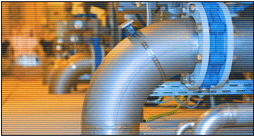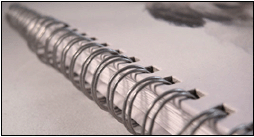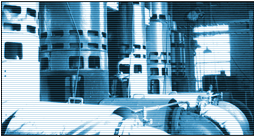|
•Case Studies /Articles
-Case study no1
(System upgrade to energy class 1)
-Article no1
(Variable Speed Pumps Explained)
-Article no2
(Energy saving tips)
-Article no 3
(Variable Speed Pumping p.1
-Article no 4
(Variable Speed Pumping p.2)
|
|
Home -> CASE STUDIES
Variable Pumping Systems (part 1)
(Based
on http://www.eere.energy.gov/
article)
Pumping systems account for significant amount of world’s energy used by electric motors (around 20%) and even between 25 – 50% of the total energy usage in some industrial facilities. There are certain ways of reducing pumps power consumption such as system design, retrofitting and operating practices. In particular, the many pumping applications with variable duty requirements have significant potential for savings. What is more, apart from cost saving variable speed motors offer better reliability, improved performance and longer life span.
Most existing systems requiring flow control make use of bypass lines, throttling valves, or pump speed adjustments. Speed control is the most efficient one. When a pump’s speed is reduced, less energy is imparted to the fluid and less energy needs to be throttled or bypassed. Speed can be controlled in a number of ways, with the most popular type of
variable speed drive (VSD) being the variable frequency drive (VFD).
Pump speed adjustment is not appropriate for all pumping systems. When the
requirements of a pump and system are understood, the user can consult this
guide to help determine whether variable speed pumping is the correct
choice.
A proper discussion of pumping considers not just the pump, but the entire pumping “system” and how the system components interact. The recommended systems approach to evaluation and analysis includes both the supply and demand sides of
the system.
In a pumping system, the objective, in most cases, is either to transfer a liquid from a source to a required destination, e.g., filling a high-level reservoir, or to circulate liquid around a system, e.g., as a means of heat transfer. Pressure is needed to make the liquid flow at the required rate and this must overcome losses in the system. Losses are of two types: static and friction head. Static head, in its most simple form, is the difference in height of the supply and destination of the liquid being moved, or the pressure in a vessel into which the pump is discharging, if it is independent of flow rate. Friction head (sometimes called
dynamic head loss), is the friction loss on the liquid being moved, in pipes, valves, and other equipment in the system. This loss is proportional to the square of the flow rate. A closed-loop circulating system, without a surface open to atmospheric pressure, would exhibit only friction losses.
Most systems have a combination of static and friction head. The ratio of static to friction head over the operating range influences the benefits achievable from VSDs. Static head is a characteristic of the specific installation. Reducing this head whenever possible generally reduces both the cost of the installation and the cost of pumping the liquid. Friction head losses must be minimized to reduce pumping
cost, but after eliminating unnecessary pipe fittings and length, further reduction in friction head will require larger diameter pipes, which adds to installation cost.
Proper selection of pumps, motors, and controls to meet the process
requirements is essential to ensure that a pumping system operates
effectively, reliably, and efficiently. All pumps are divided into the two
major categories of
positive
displacement (PD) and rotodynamic. PD pumps can be classified into two main groups: rotary and reciprocating. Rotary pumps typically work at pressures up to 25 Bar (360 pounds per square inch [psi]). These pumps transfer liquid from suction to discharge through the action of rotating screws, lobes, gears, rollers, etc., which operate within a rigid casing. Reciprocating pumps typically work at pressures up to 500 Bar. These pumps discharge liquid by changing the internal volume. Reciprocating pumps can generally be classified as having a piston, plunger, or diaphragm, displacing a discrete
volume of liquid between an inlet valve and a discharge valve. The rotary motion of the driver, such as an electric motor, is converted to the reciprocating motion by a crankshaft, camshaft, or swash-plate.
|
|

|





